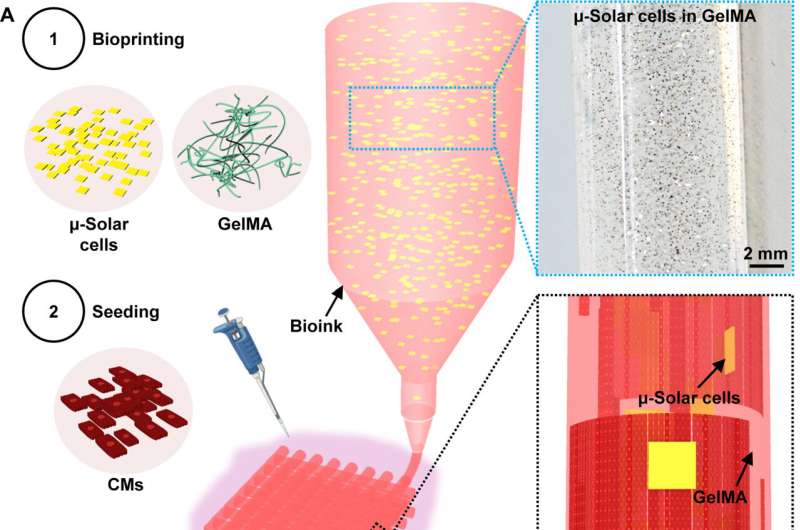“We showed for the first time that with this optoelectronically active ink, we can print scaffolds that allow remote control of engineered heart tissues,” said co-corresponding author Y. Shrike Zhang, Ph.D., of the Division of Engineering in Medicine at Brigham and Women’s Hospital, a founding member of the Mass General Brigham health care system. “This approach paves the way for non-invasive light stimulation, tissue regeneration, and host integration capabilities in cardiac therapy and beyond.”
Three-dimensional bioprinted tissues composed of cells and other body-compatible materials are a powerful emerging tool to repair damaged heart tissue. But most bioprinted tissues cannot generate the necessary electrical activity for cellular function. They must instead rely on invasive wire and electrode placement to control heart activity, which can damage body tissues.

